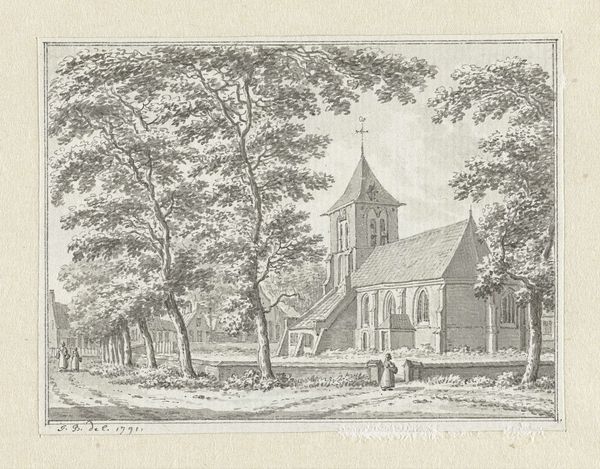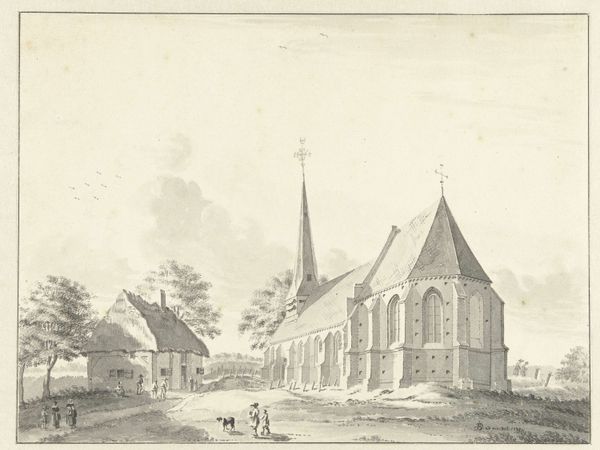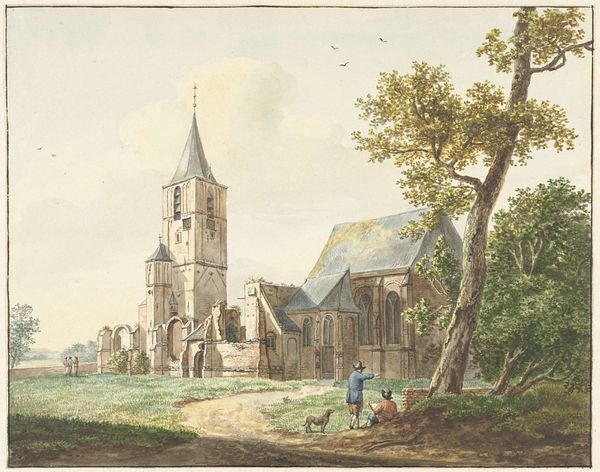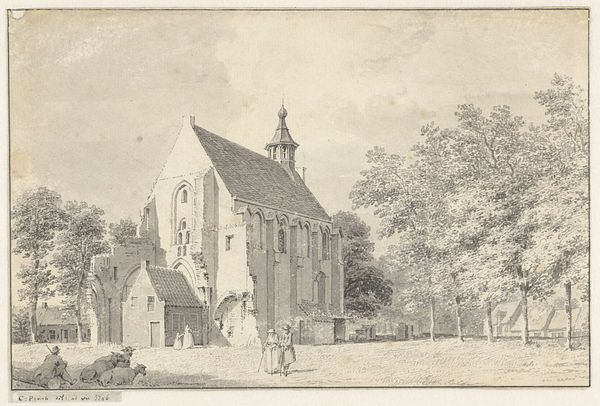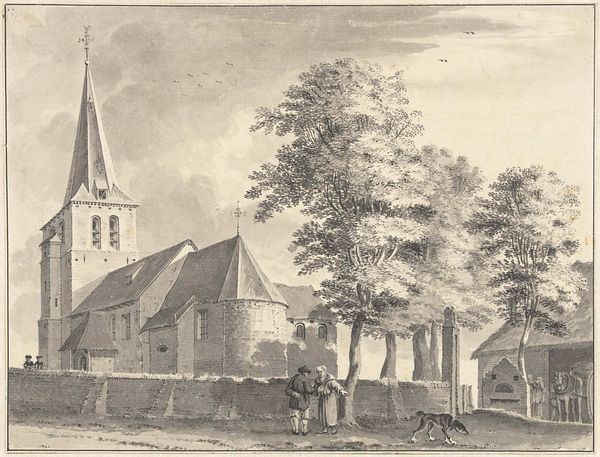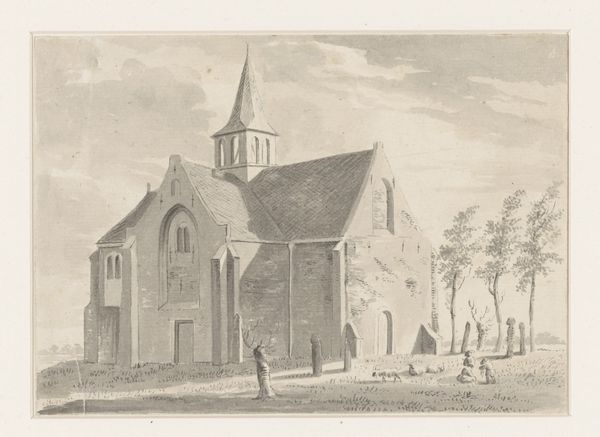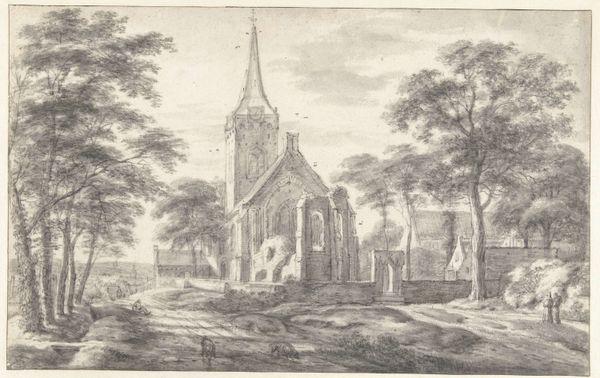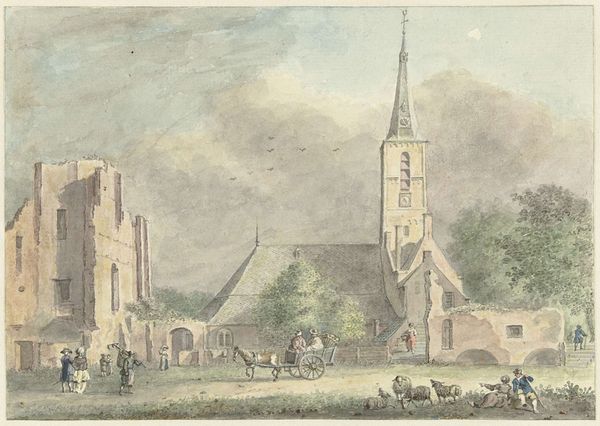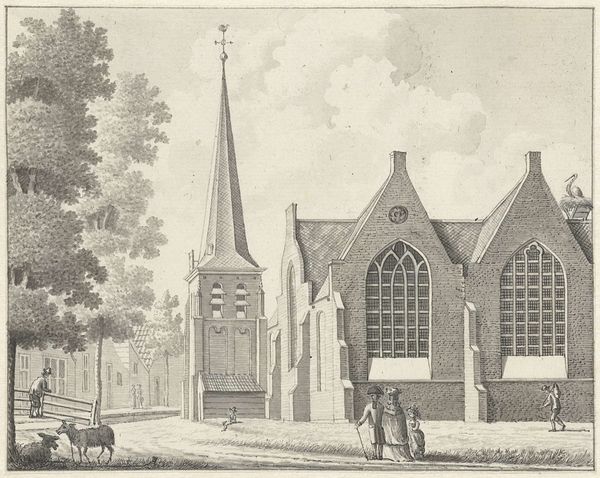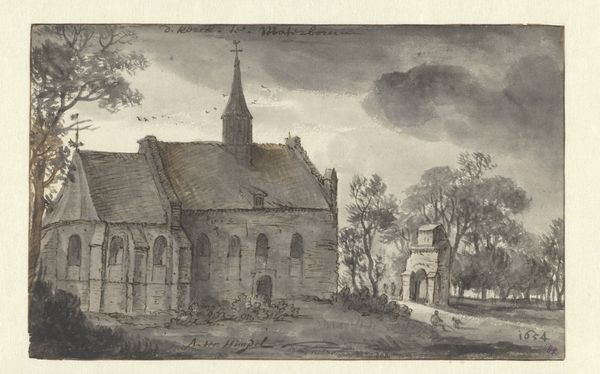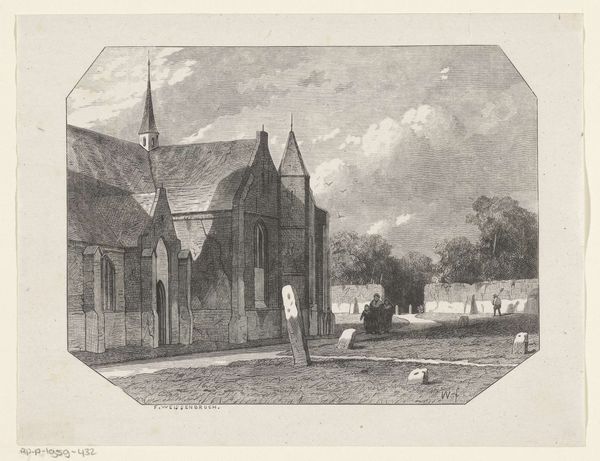
drawing, paper, ink
#
drawing
#
dutch-golden-age
#
landscape
#
paper
#
ink
#
cityscape
#
genre-painting
#
realism
Dimensions: height 88 mm, width 134 mm
Copyright: Rijks Museum: Open Domain
Curator: This serene Dutch Golden Age cityscape by Cornelis Pronk, titled "View of the Church in Arkel," completed sometime between 1733 and 1740, presents a tranquil, yet detailed vision. Editor: My immediate response is one of understated grace. The limited color palette lends it a quiet dignity. The way the ink drawing captures the light on the stone creates a rather inviting atmosphere, it’s the perfect quaint village church! Curator: I appreciate that observation. The choice of a modest palette is far from accidental. Pronk’s realism, embedded in this genre painting, can be considered against the background of class and representation of labor in the Dutch Republic during that time. What symbolic language can you decode? Editor: Well, the church itself serves as a grounding point for the community. Churches, historically, represent not just spiritual, but communal identity—a safe place where norms are reasserted. Here, Pronk meticulously renders its architectural features. Notice the delicate spire, its windows—they resonate deeply with the Dutch identity of that era. Even the lone figure seated by the tree… a contemplative presence that subtly invites us to reflect. Curator: I agree that we cannot isolate that. What do the small figures walking and seemingly engaged in daily life reveal about the artist's potential biases toward certain demographics within Arkel? Considering this was a period marked by a distinct socio-economic hierarchy, Pronk's gaze and his artistic decisions invite scrutiny, in my opinion. Editor: Your perspective adds another dimension. I still feel that the image leans into tradition and the continuity of culture through such visual symbols. I wonder how intentional it was to invite us into questioning social power structures. Perhaps it lies in its subtlety. Curator: Subtlety does not absolve it, although your reading does bring another interesting insight. It highlights how our relationship with the symbols change based on cultural paradigm and lenses we apply, but I still would argue this work prompts questions about Dutch societal values. Editor: Maybe that is part of the long-lasting appeal. Curator: Indeed. It reminds us how artworks remain open for dialogues that we desperately need today. Editor: Absolutely, even a seemingly quiet cityscape can become quite provocative upon deeper investigation!
Comments
No comments
Be the first to comment and join the conversation on the ultimate creative platform.
